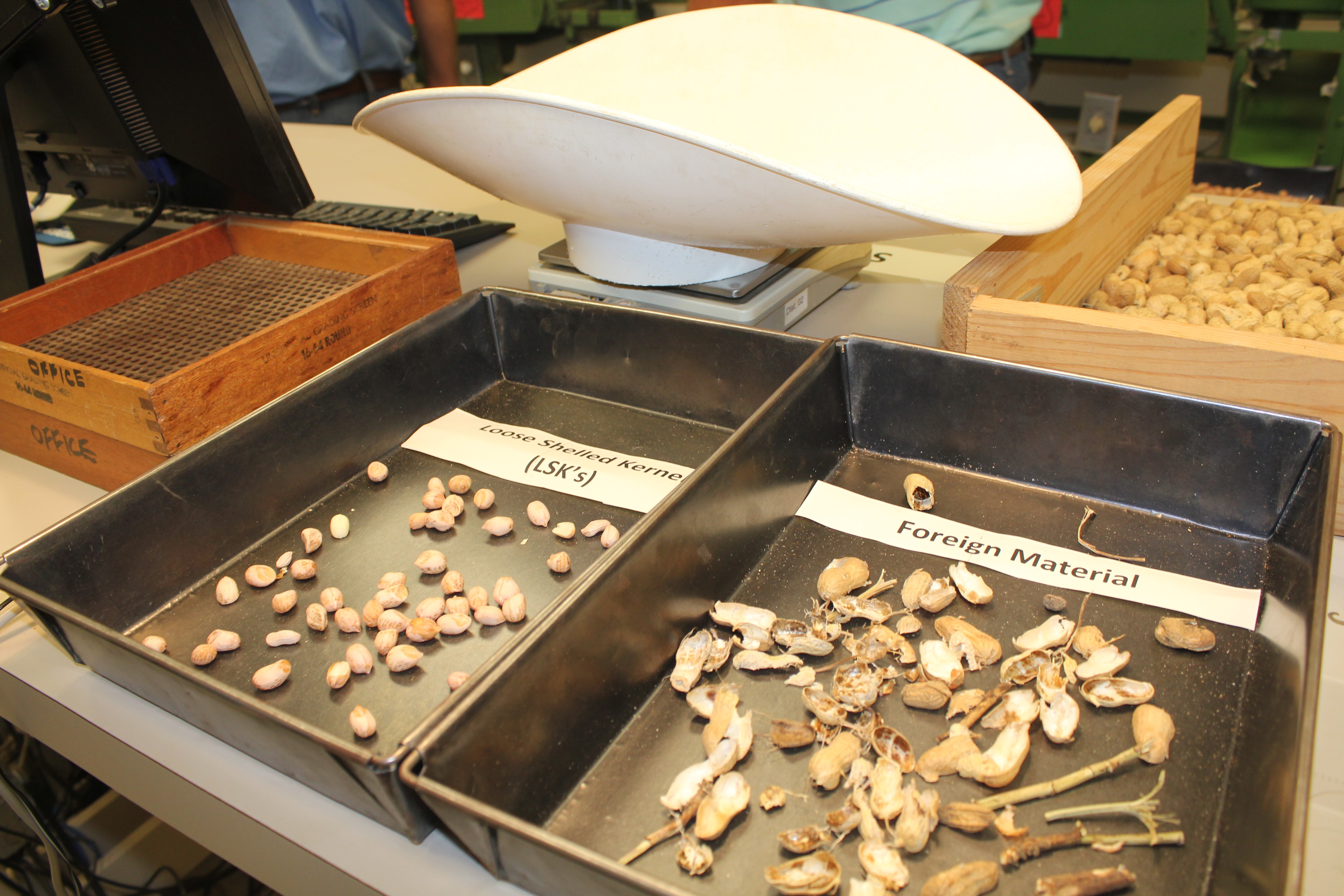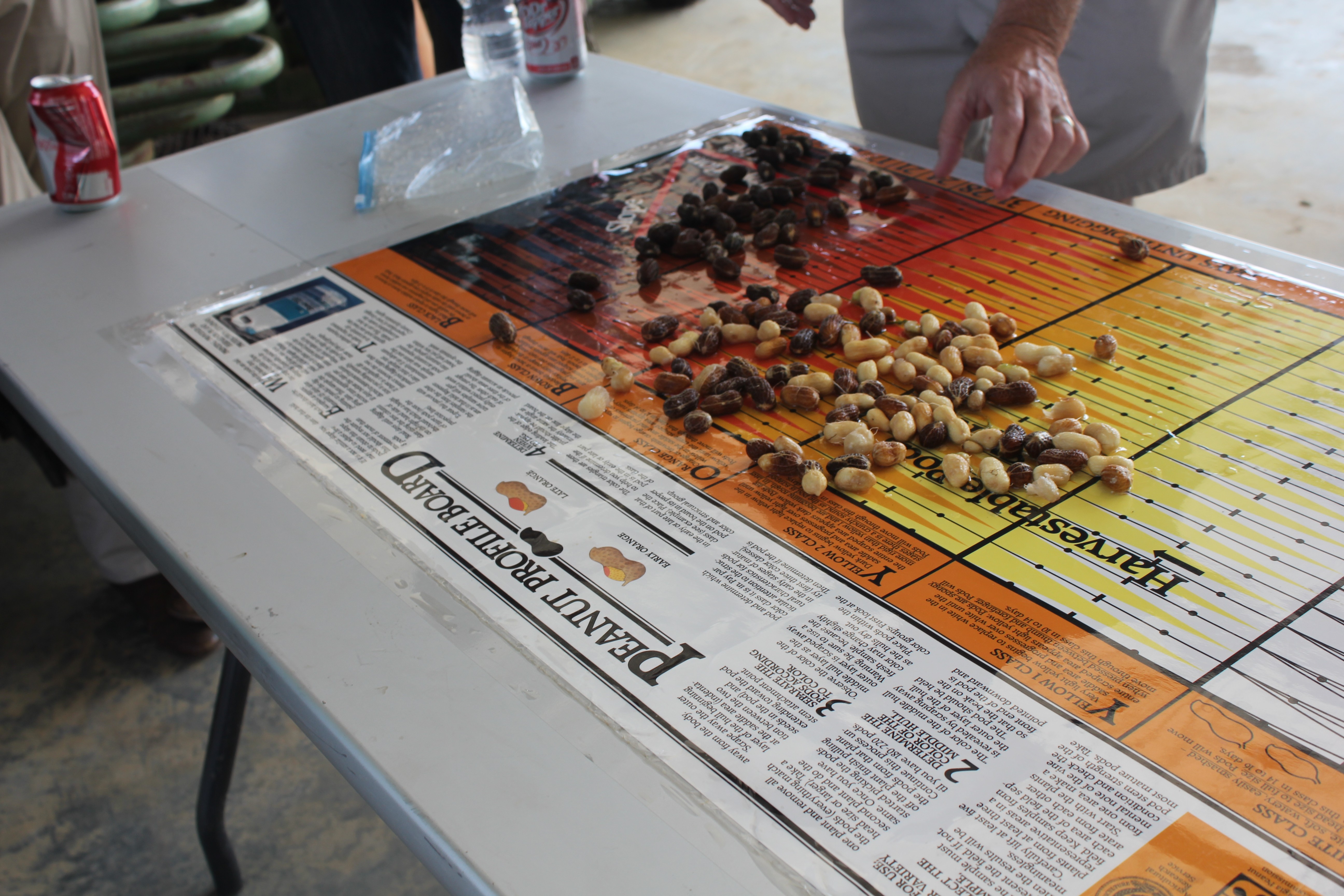Peanut season is the busiest time of year for everyone at Georgia Federal- State Inspection Services. Farmers are in demand to have their peanuts graded in time for market. Georgia FSIS inspects over 35 comedies, peanuts being the largest. Peanut Tour attendees had the opportunity to see how the Farmers’ Stock grading procedures work, view grading equipment and the grading process. Teresa Cox, supervisor of District 12, talked about the grade room procedures and the process for grading inspection for peanut seeds. She began by saying once they they obtain their peanut samples, peanuts are first poured onto a grader, which requires a minimum of 1,500 grams of peanuts.  The peanuts then go into a foreign material machine which separates foreign material and LSK (lose shelled kernels). From this point, peanuts are taken from the scales to a pre-sizer, to a sheller and then to a moisture machine. Once the moisture machine has 250 grams, peanuts are then transported to a shaker to get rid of splits or immature kernels. They are then poured into a pan and hand-picked for anything that may have been missed before going through the splitter where they check for concealed damage and Aspergillus flavus mold.
The peanuts then go into a foreign material machine which separates foreign material and LSK (lose shelled kernels). From this point, peanuts are taken from the scales to a pre-sizer, to a sheller and then to a moisture machine. Once the moisture machine has 250 grams, peanuts are then transported to a shaker to get rid of splits or immature kernels. They are then poured into a pan and hand-picked for anything that may have been missed before going through the splitter where they check for concealed damage and Aspergillus flavus mold.
Also at this stop, tour attendees got the chance to visit the Georgia Department of Agricultural Lab in Tifton, where they focused on the seed, fertilizer and feed section. This section administers the rules and regulations related to seeds, fertilizer and feeds by regulating labeling and quality standards for items for sale in Georgia. Mark McMillan, a representative with the Georgia Department of Agriculture, specifically focused on the feed and fertilizer of the tour where he talked about sulfur tests and Inductively Coupled Plasma (ICP), which are tests that determine which elements are in the fertilizers and which are absent. Scott Hobby, representative with the Georgia Department of Agriculture, talked more about the seed portion of the lab. The Georgia Department of Agriculture seed lab tests over 20,000 seeds annually, with 12,000 of them being peanut samples. Farmers have the ability to send seeds to the Department of Agriculture lab and have their seeds tested free of charge. Dee-Dee Smith, a seed analyst, then went over the daily routines of a a seed analyst who separates seed to make labes to go on seed bags before administered to the public. Seeds are separated into kind and variety before sold.
Dr. John Beasley with the University of Georgbia also treated tourist to HOT boiled peanuts donated by Albert Culbreath while they listened to him discuss the differences in the four main variates of peanuts and how to determine maturity in peanuts using a Peanut Profile Board.  The board is colored coded from lighter colors to darker so researchers and extension agents can separate them via color on the chart to determine the number of days until maturity. Dr. Beasley also discussed the hull-scrape method and other ways to determine the maturity of peanuts and when they are ready to harvest.
The board is colored coded from lighter colors to darker so researchers and extension agents can separate them via color on the chart to determine the number of days until maturity. Dr. Beasley also discussed the hull-scrape method and other ways to determine the maturity of peanuts and when they are ready to harvest.
